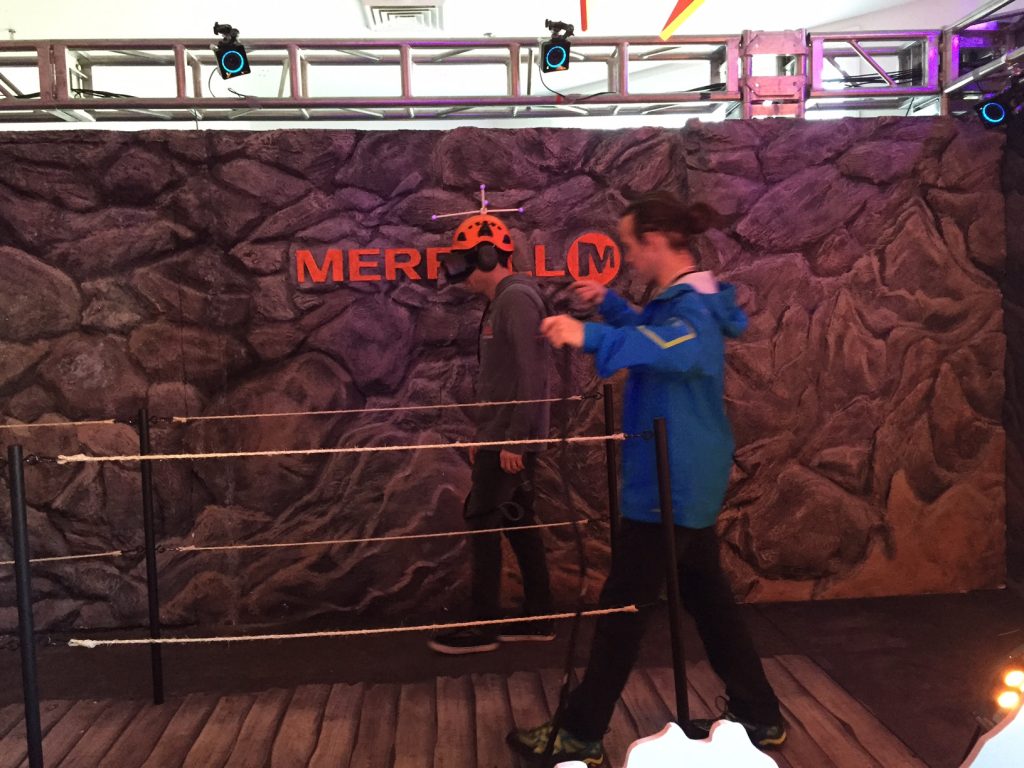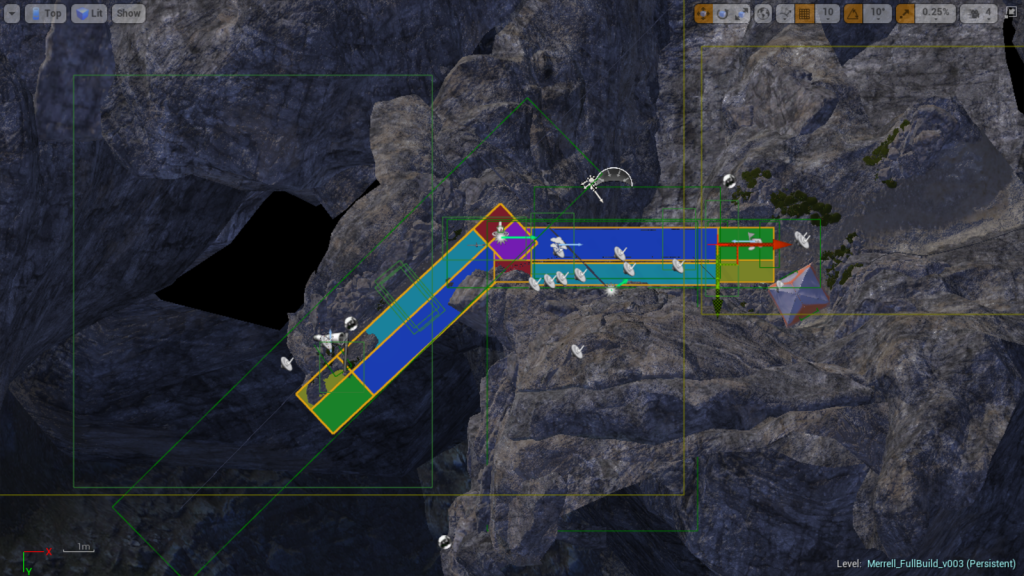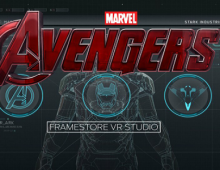Made with: Unreal Engine 4 / C++
Awards: Art Directors Club, Clio Sports, Webbys Honoree
It’s a beautiful day to be hiking on the Dolomites in Italy. At 3km elevation, the air is thin, and the valley spanning beneath the footbridge you’re on would be the most beautiful thing you’ve seen, if it weren’t the most terrifying one. Suddenly, the bridge collapses.
Made for a week-long activation at Sundance Festival in February 2015 (before the announcement of the HTC Vive), the Merrell Trailscape installation was the first to do many things in the world of commercial VR:
Room-Scale Mixed Reality
 Tracking at 320fps, the installation’s Optitrack motion-capture cameras provided complete coverage of the interaction space. All of the objects in the VR scene (walls, poles, ropes) were replicated in the real world – twice – once for the layout of the track walking towards the fall, and again for the track walking back.
Tracking at 320fps, the installation’s Optitrack motion-capture cameras provided complete coverage of the interaction space. All of the objects in the VR scene (walls, poles, ropes) were replicated in the real world – twice – once for the layout of the track walking towards the fall, and again for the track walking back.
The tracking infromation was fed back into Unreal Engine at <1ms latency, always hitting the same frame as the inertial tracking of the headset.
Redirected Walking
 Using clever interaction tricks (low visibility, blurred sound spatialization, kinesthetic actuation) to slow down the user, the installation was capable of redirecting a user’s walk 145 degrees outside their perceived walking angle: the user thought they were turning 45 degrees, when in fact they were turning around and walking back.
Using clever interaction tricks (low visibility, blurred sound spatialization, kinesthetic actuation) to slow down the user, the installation was capable of redirecting a user’s walk 145 degrees outside their perceived walking angle: the user thought they were turning 45 degrees, when in fact they were turning around and walking back.
Dynamic Chaperone Bounds
Since the entire physical environment was doubly-mapped, the installation presented the challenge of virtual objects with no physical manifestation, but also, SOME WALLS WERE REAL WALLS. In the walk on the way back, the “right” way of walking was within 25cm of a wall. In order to avoid hitting objects or giving the impression that all of the objects are virtual, the installation utilized display cues of objects disappearing when the user was in danger of destroying the illusion, or the entire display going dim when an object is reached. Other effects were considered, but they didn’t feel as good.
Kinesthetics + Wind Machines
To assist Redirected Walking and positioning, the installation’s floor was mounted with haptic transducers. The vibration pattern was chosen so that accents of the bridge’s collapse were mixed with the vibrations needed to confuse the user about their orientation. As soon as the redirected walk was completed, wind machines would kick in, completing the illusion that the user is walking on a cliff.


